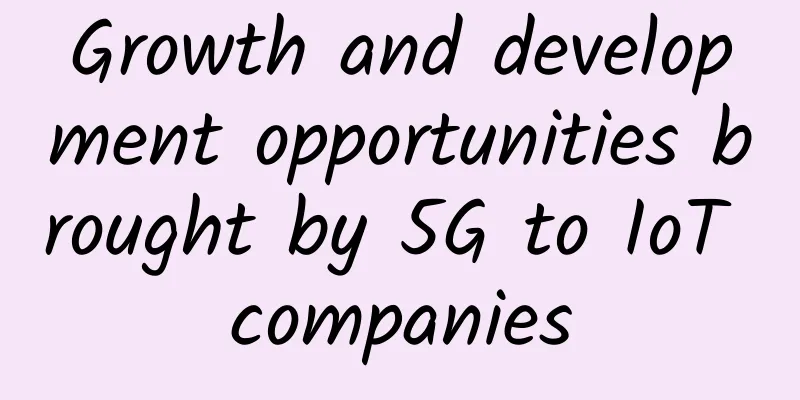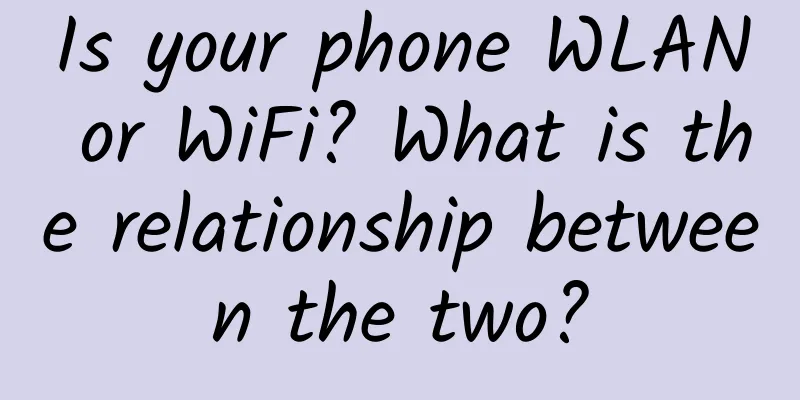Growth and development opportunities brought by 5G to IoT companies

|
Since the first major announcement just two years ago, the rollout of 5G has been steadily gaining adoption around the world and becoming more commercialized. The fifth generation (5G) technology is a unique combination of real-time data transmission and device communication, wide coverage and low latency, which is ideal for large-scale, more complex IoT deployments. In addition to this, as more and more telecom providers today diversify their service offerings with vertical IoT support, more and more enterprises have begun to work on more ambitious projects and have knowledgeable connectivity partners.
Let’s take a closer look at the growth and development opportunities that the 5G rollout presents for IoT businesses. Fully remote operation and applicationThe 2020 coronavirus pandemic has brought unprecedented disruption to our workplaces, with even sectors that have historically relied on direct physical labor, such as manufacturing, energy, and supply chains, forcing businesses to shift to remote work. During this crisis, IoT has proven to be a strong supporter of remote work, allowing employees to monitor and manage production lines and their performance, warehouse and inventory status, and other key indicators in real time through connected endpoints and smart device systems. According to 84% of stakeholders surveyed for Vodafone's 2020 IoT Focus Report, this is a key factor in maintaining business continuity for their companies. 5G connectivity is expected to further enhance existing remote monitoring capabilities. Rather than relying solely on sensor data, workers can also access high-quality, uninterrupted video streams from shop floor cameras. Real-time video feeds will play an important role in timely detection of defects and downtime, product quality and employee monitoring, and large-scale site inspections. Human-machine interaction in 5G deploymentOn-site network deployment in 5G deployment will allow business owners to expand their robotic and connected machinery infrastructure and supplement it with advanced operational control layers such as human-machine interfaces. In this way, businesses can become more self-sufficient. Employees can maintain real-time granular control of machines and manage operations from anywhere, minimizing the need for on-site staff. Currently, Asian manufacturers are making groundbreaking progress in their 5G-enabled projects with the assistance of local suppliers of IoT in the telecommunications sector. One of the most notable examples in this field is the Conch Group, a leading Chinese cement manufacturer, which adopted 5G in 2019 with the help of Huawei and has since reported not only the success of the project but also significant resource utilization improvements and energy efficiency gains. Efficient virtual collaborationAs the shift to remote work upends established processes of workplace communications, IoT and other innovative technologies are gaining attention as aids for distributed teams. As remote workers start setting up shop, connected conferencing devices, previously the preserve of smart conference rooms, have migrated to home offices. Devices such as cameras with automatic speech recognition engines and interactive whiteboards with real-time editing capabilities form the foundation of work-from-home setups, helping to create engagement effects during team calls and reduce the friction of remote collaboration. In addition, employees are increasingly relying on their virtual assistants, such as Alexa or Google Nest, to take notes or create reminders and to-do lists during video calls, making it easier to focus.
Collaboration EnablementThe introduction of 5G is encouraging team collaboration to set a new level and integrating solutions that can make online meetings more engaging. Attracting attention in 55% of companies surveyed for the Nokia 5G Report, virtual reality meetings are currently making a splash in the business world and are more widely accessible than ever before, thanks to 5G's faster connection speeds, better bandwidth and reliability. In a virtual environment, employees can meet face to face in the form of real-life avatars, share data and demonstrate images and videos. Virtual reality makes meetings almost lifelike and can promote better understanding between participants, while also overcoming feelings of isolation. The convergence of VR and IoT also allows remote teams to freely interact with digital twins, which are virtual 3D replicas of equipment or other physical assets that are automatically created based on real-time sensor data. With 5G ensuring uninterrupted and fast data transmission, employees can get together in a virtual room and collaborate effectively on certain simulated objects without leaving home. With methods to collaborate effectively over time and distance, there’s no reason for businesses to return to the office in the future. After the pandemic subsides, they can still consider remote work as a viable option in the long run. Frictionless customer experienceIn 2021, customer experience remains a key market differentiator. Over the past year, generations of consumers have become increasingly tech-savvy and accustomed to extremely convenient omnichannel travel. Beyond that, while understandably prioritizing safety and value for money, today’s customers are less willing to try new things and crave excitement. The increasing availability of 5G has made IoT adoption in retail, banking, hospitality and other customer-facing industries the right tool to meet these evolving expectations. Cashless RetailFor example, improved connectivity has led to cashless store technology, popular on Amazon and actively implemented by large chains, allowing business owners to meet customer demands for contactless, hygienic interior lighting. Similar technology can be implemented in all bank branches to facilitate cardless withdrawals and contactless self-service. Autonomous transportation and last-mile delivery is another technology that 5G makes practical for improving employee and customer safety. With faster transmission speeds, businesses can now implement data-heavy but more holistic and traffic-efficient vehicle-to-everything communication systems for their delivery trucks. In addition to enhancing the safety of in-person experiences, IoT promises to make them more engaging and convenient. Today, large retail brands are investing in smart mirrors and fitting rooms that not only overlay clothes and makeup over the customer’s image but, as part of the store’s ecosystem, provide instant updates on merchandise availability. Growth and innovationFor IoT-enabled businesses, the avenues for growth and innovation sparked by 5G deployment are not only numerous but also within reach. By partnering with telecom operators and specialized IoT development companies, enterprises can quickly enhance their existing connectivity infrastructure and take advantage of new IoT use cases, while also ensuring that the transformation is successful and secure. |
Recommend
Expert Viewpoint: Looking into the future of the Internet
How will businesses’ approach to networking evolv...
Private 5G is key to improving safety, efficiency and productivity in the mining industry
Mining is one of the most important industries in...
Zhang Pingan, President of Huawei Consumer BG Cloud Service: Fertile Soil, Shining Stars, Win-win Digitalization
On June 22, DigiX2018 Huawei Terminal Global Part...
Ministry of Industry and Information Technology: The information and communication industry is operating smoothly, with 5G users accounting for more than 30%
On November 21, the Ministry of Industry and Info...
HostKvm New Year Promotion: 30% off Hong Kong International/Los Angeles VPS, 20% off other data centers
HostKvm also released a promotional plan for the ...
RAKsmart: San Jose/Los Angeles E3 server flash sale starting from $30/month, cluster server starting from $142/month, US/Hong Kong/Korea/Japan data centers
RAKsmart is a foreign hosting company founded by ...
China Mobile's Cai Qian: 5G transmission is ready, SPN is about to usher in a new era of bearer
At present, 5G has become a hot topic in the indu...
Wu Hequan, Academician of the Chinese Academy of Engineering: 5G new infrastructure faces five major challenges
At the "5G and Network Development Strategy ...
5G and Net Zero: Can the Two Overlap?
As COP27 wraps up this year’s agenda, a number of...
Sharktech: 1Gbps unlimited traffic/60G high-defense server starting at $79/month, available in Los Angeles/Denver/Chicago/Netherlands data centers
Sharktech has integrated resources and updated in...
Dapr Practice in Alibaba Cloud Native
What is Service Mesh? Since 2010, SOA architectur...
After 2G network withdrawal, the results began to show
After a short period of stagnation, telecom busin...
Feiyuxing Wireless helps Wuhan Tilisaer complete panoramic coverage of office buildings
When it comes to staying beautiful, this is proba...
What does a 5G network look like? A simple article to understand
[[311978]] Whether it is 2G, 3G, 4G or 5G, the mo...
Redefining the Network: Navigating the World of SD-WAN
In the evolving enterprise network environment, c...









